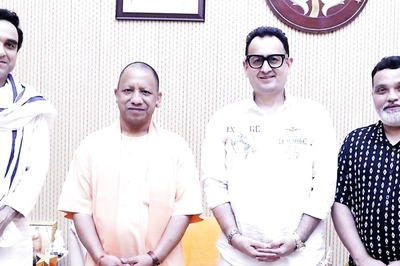
views
From a quaint Garden City to one of the most sought-after destinations on the global Information Technology map, Bangalore has seen an era unfold within a few years. Here's what makes India's Silicon Valley so unique and special.
Bangalore – it all boils down to beans!
It all began with boiled beans! That’s how the Silicon Valley of India got its name – Bangalore or, as many prefer to call it, Bengalooru.
 The name Bangalore is an anglicised version of Bengalooru, a word in the Kannada that was given to a town.
The name Bangalore is an anglicised version of Bengalooru, a word in the Kannada that was given to a town.
According to popular folklore, the word was derived from the phrase bende kaalu ooru, that translates into "the town of boiled beans."
The story is interesting. It is said that King Ballala of the ruling Hoysala dynasty lost his way in the jungle while on a hunting expedition.
Tired and hungry, he encountered a poor, old woman who offered him the only food she had - some boiled beans. Grateful to her, the king named the place bende kaalu ooru.
PAGE_BREAK
However, historical evidence suggests Bengalooru was recorded much before King Ballala's time in a 9th century temple inscription in the village of Begur.
Sold for Rs 30,000!
What has now come to be called as India's IT hub was once sold for Rs 30,000 to a dynasty!
In the year 1638, Shahaji Bhonsle, the father of Shivaji captured the City.
 In 1687 Aurangazeb's army then captured Bangalore and sold it to the Wodeyars for a paltry sum of Rs 30,000.
In 1687 Aurangazeb's army then captured Bangalore and sold it to the Wodeyars for a paltry sum of Rs 30,000.
In 1759, Hyder Ali received Bangalore as a jagir from Krishna Raja Wodeyar II. He fortified the southern fort and made Bangalore an army town.
When Tipu Sultan died in the 4th Mysore war in 1799, the British gave the kingdom, including Bangalore back to Krishna Raja Wodeyar III.
The British Resident stayed in Bangalore. In the beginning of the 19th Century, the General Post Office was opened and the Cantonment was established nine years later in 1809.
Gardening glory…
Bangalore's reputation as the Garden City of India began in 1927 with the Silver Jubilee celebrations of the rule of Krishnaraja Wodeyar IV.
PAGE_BREAK
 Several projects such as the construction of parks, public buildings and hospitals were instituted to beautify the city.
Several projects such as the construction of parks, public buildings and hospitals were instituted to beautify the city.
The Wodeyar built the famous Lal Bagh in 1759, one of Bangalore's most beautifully laid out gardens. And since then, the city’s green cover has been growing.
On the IT Super-Highway
India's Silicon Valley, the IT capital of India, and more such illustrious titles have come the city’s way. Bangalore’s booming Information Technology sector has been recognised worldwide and how.
The Oxford English dictionary has included a word 'Bangalored' in its latest edition – is an indication of how seriously the West has taken the city’s IT potential.
 Today, Bangalore in probably more famous in the world of business than even India's commercial capital Mumbai and the best of the IT world have set up bases in Bangalore.
Today, Bangalore in probably more famous in the world of business than even India's commercial capital Mumbai and the best of the IT world have set up bases in Bangalore.
The city is on the IT highway of growth - only that its insfrastructure is not being able to keep pace with it and at times even threaten to slow down the growth.



















Comments
0 comment